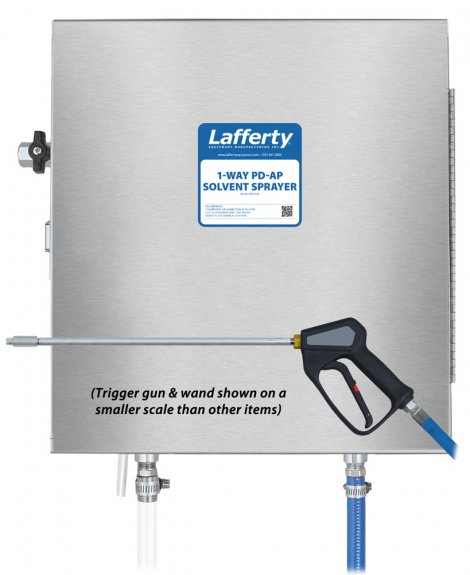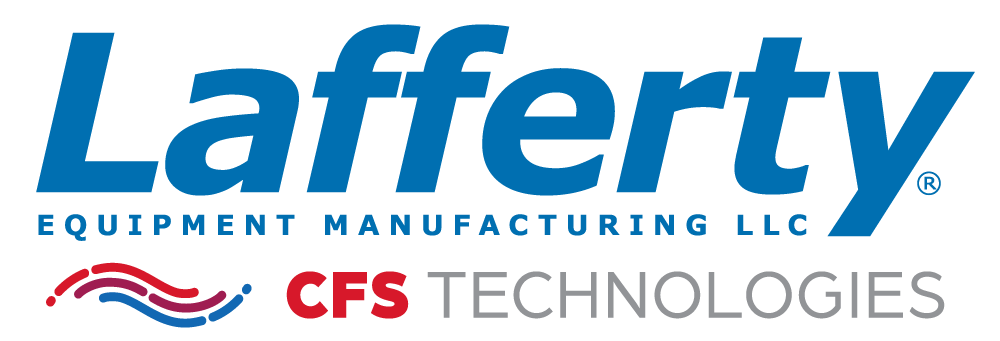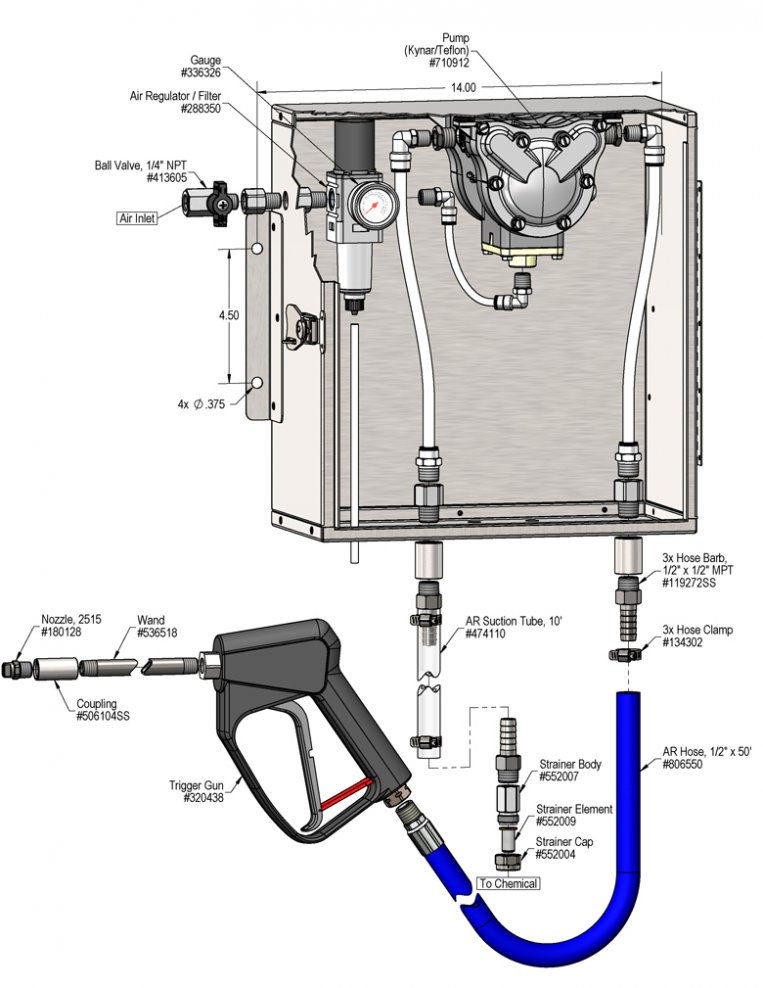Overview
The 1-Way PD-AP Solvent Sprayer is a solvent spray applicator for projecting ready-to-use solvent solutions on to a variety of surfaces. Designed for facilities with low or no water pressure. This system is suitable for handling many solvents and features a lockable, stainless steel enclosure. It uses a 3/8" Warren Rupp Kynar/Teflon air-operated, double-diaphragm pump to draw pre-diluted chemical from a static tank and project it through the discharge hose, trigger gun, wand and fan nozzle.


